Canadian History With New Eyes: The Dark Ages?
The Dark Ages & the French Wars of Religion Some time ago, I started to
Home / Thomas McKay: The Forgotten Founder Of Ottawa (2)
The Creativity & Resourcefulness of McKay
The experience Thomas McKay gained when he first partnered with another skilled Scottish stonemason – John Redpath, to build The Lachine Canal in the 1820s, contributed to his success in getting the contract to build the Ottawa Locks. They were sought out by Colonel John By and given their first masonry contract to build the ‘Union Bridge’ across the Chaudiere Falls on the Ottawa River, to link Ottawa and Hull.
This was a necessary preliminary work to get materials from the Hull site to the Ottawa site. This contract was a very difficult one – to build the first two stone arches of the right spans of the bridge. This was an undertaking of great magnitude with hazardous working conditions, using materials and equipment which had severe limitations for the task. Nevertheless, it was accomplished.
This was done in September of 1826, and by the end of November Colonel By awarded Mckay the contract to build the Commissariat Building which was completed by May 1827. He used only available materials from the surrounding area (stone, mortar and timber). An interesting fact is that the building was built with no nails, only dowels used to fasten the joints. That building still stands today and is the oldest building in Ottawa. The indomitable Thomas McKay, also built Colonel By’s house, which was found just behind the Chateau Laurier, while building the Commissariat.
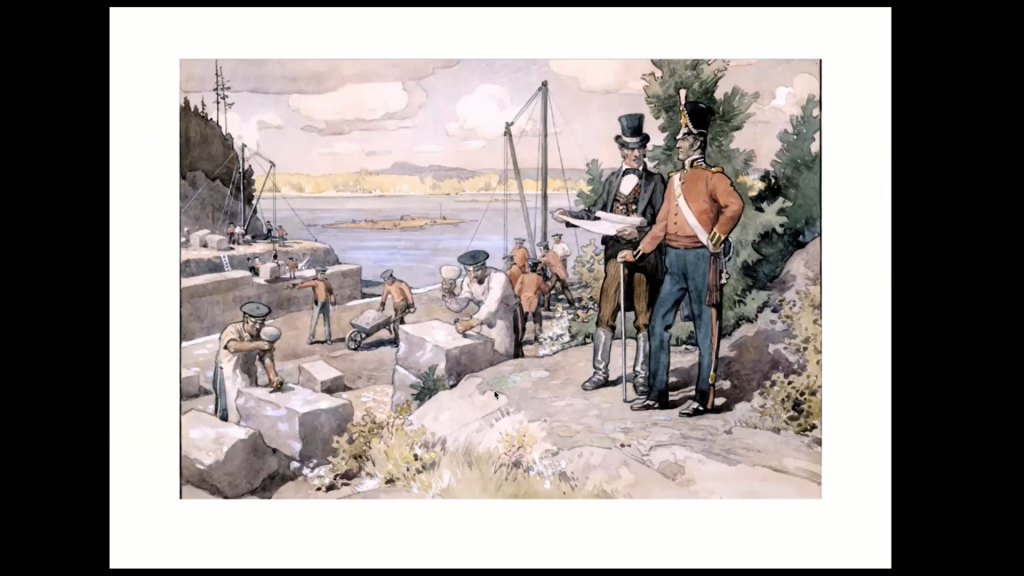
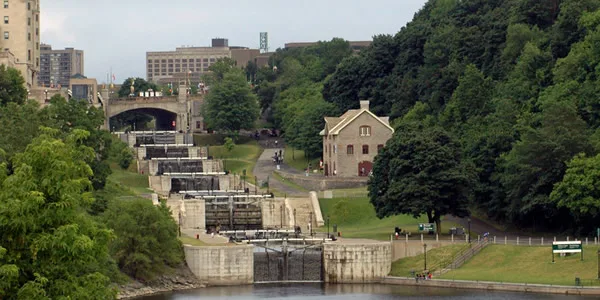
The creative McKay, used limestone found in the cliffs adjacent to the locks for the cut stones. Then he made mortar by creating a limestone quarry for crushing the stones in the forests behind Hull, and used sand from the mouth of the Gatineau River. He developed a long grouting tube to grout the cut stones together using a mixture of cement, sand and water.
He and his men built the 8 locks, 10 feet tall, by 1830 using all local materials.
Some of his investment and development projects happened concurrently while building the Rideau Locks (1826-1832) – the Bytown Museum (1827), John By’s house, and the St. Andrews Presbyterian Church (1828).
Life After The Locks: A Landmark Community
Other development projects happened soon after the construction of the Rideau Canal ended in 1832. He built a sawmill at New Edinburgh (1832); a cloth mill (McKay and McKinnon Cloth Mill 1837); Rideau Hall (1838) and Earnscliffe (1855).
McKay bought land in Lowertown at the intersection of the Rideau River and Ottawa River. The town he laid out in 1834 – New Edinburgh, still exists. It was named for the capital of his home country. He encouraged other Scottish immigrants to settle there, building a sawmill and a grist mill, making the area a hub of successful industry. No wonder he was involved in the Bytown Emigration Society.
By 1837, he expanded his holdings by purchasing 110 acres east of New Edinburgh, which is now known as Rockcliffe Park.
East of this property, he built his Scottish mansion of limestone. It used to be called ‘McKay’s castle’. It is now the official residence of the Governor General. Many of the streets around Rideau Hall, including Crichton, Keefer, Charles, and John, he named for relatives [1]. As explored in Part 1, McKay developed the region at an astounding rate.
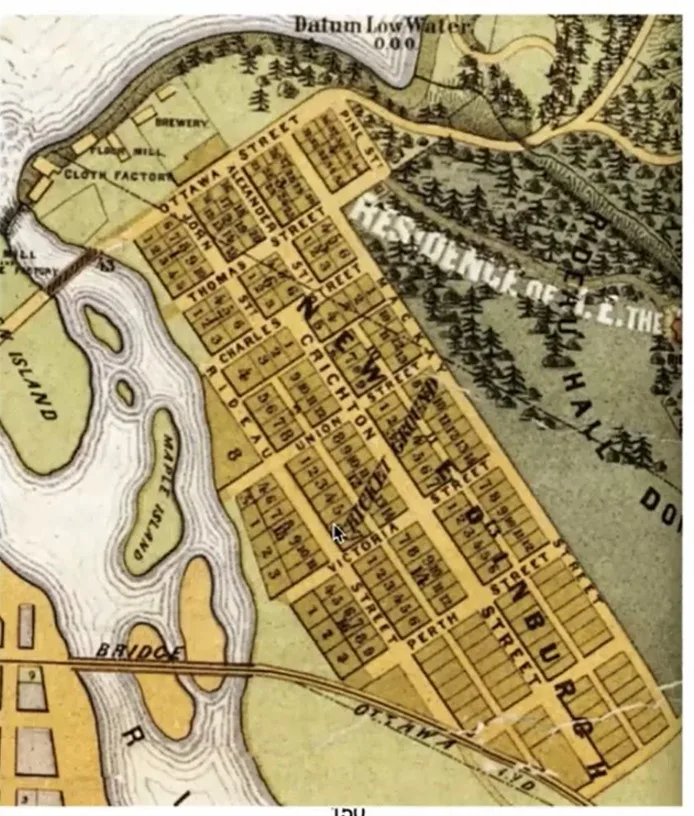
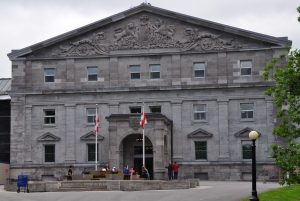
An edition of the Ottawa Citizen, dated April 4, 1940, describes the evolution of Rideau Hall from McKay’s original work:
“The building [Rideau Hall] dates back to the days when Ottawa was still the little village of Bytown, unthought of as the future capital of Canada. The late Hon. Thomas McKay, a lumber magnate, purchased 1,000 acres of woodlands on which to build a family homestead. As the blocks of limestone rose on the site in 1837, Queen Victoria was ascending the British throne.
The modest retreat of the McKay family was leased in 1865 by the government authorities of upper Canada. In 1867, Confederation year, the property was purchased outright for $82,000 as the official residence of the Governor General, but neither Mr. McKay, nor Viscount Monck, the first vice-regal tenant, would recognize their former home amid the additional wings, storeys, and added chambers which constitute the Rideau Hall of today.” [2]

Earnscliffe
Not far from his mills by the Rideau Falls, he built another mansion known as Earnscliffe for his daughter (one of his sixteen children), and son-in-law (John McKinnon) in 1855. In 1866, McKinnon died and it was bought by his other son-in-law (Thomas Keefer) who sold it in 1868 to Thomas Reynolds who was associated with the early development of the railway system in Canada.
Originally dubbed “Eaglescliffe”, it was renamed after the property was sold to a railroad developer, Thomas Reynolds. John A. Macdonald, a friend of Reynolds who later purchased the building, is believed to have been the one to suggest “Earnscliffe” as a replacement title. Earnscliffe is now the residence of the British High Commissioner.
New Edinburgh was eventually absorbed by the city of Ottawa in 1887. Interestingly enough, the former village is now home to the area of Sussex Drive which houses the Prime Minister’s residence (#24 Sussex – just across the road from Rideau Hall) and various Embassies.
Stornoway in Rockcliffe Park, the home of the Leader of the Opposition, once sheltered the Dutch family during WWI and is the birthplace of the Dutch Princess Margaret.
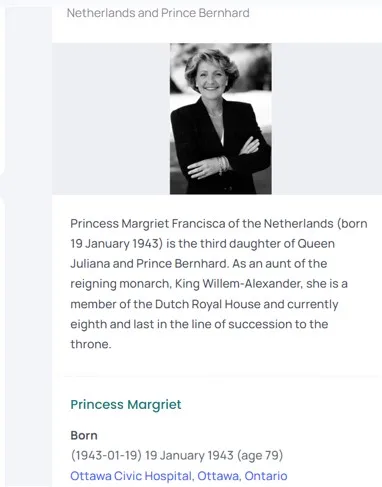
Leaving a Legacy
Thomas McKay accomplished in a few years what many strive for in a lifetime. McKay was an Elder and Trustee of the St. Andrews Presbyterian Church found at the corner of Kent and Wellington Streets. He was also a founding Trustee of Queens College now known as Queens University of Kingston. He was not only a mason, he was a politician as well. Beginning in 1828, McKay’s political career spanned nearly three decades. From 1834 to 1841, he became active in politics. This included the Bytown City Council and The Legislative Assembly of Upper Canada. In 1841 when the two provinces were united he served on its Legislative Council until 1855.
He built the first railway in Ottawa, to link Bytown to Prescott on the St Lawrence. It was called the Bytown Prescott Railway. It first ran on 25th December 1854. This was to facilitate the shipment of lumber from the Ottawa River to the St Lawrence Seaway for easier shipping to markets in the US and Montreal. Bytown became Ottawa in 1855.
Organizations he worked with included the St Andrew’s Society of Montreal and he also served as a lieutenant-colonel in two battalions [2]. Of his character this has been said …
“[McKay] was a straightforward, upright honourable man; he was a plain, humble man, quite accessible even to the humblest, nevertheless he had a dignified bearing, and knew his place as a gentleman,” Andrew Wilson notes. “A prominent feature in this man’s character was a feeling in his breast for the poor….he was a steady quiet unoffensive [sic] man, much respected in the neighbourhood.” Another remembered him as a “ruddy faced, forceful man”, a determined soul, who, “when he had an objective, generally managed to reach it” [3].
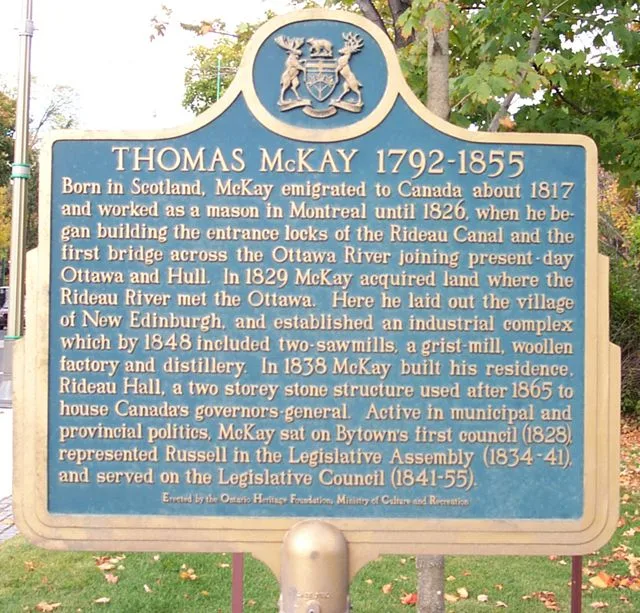
Thomas McKay died on October 9, 1855, of stomach cancer. His remains were reinterred to Beechwood Cemetery in 1871. Today in Beechwood there stands, though hidden away, a small plaque in honour of the great man who lies beneath: Thomas McKay, Ottawa’s forgotten founder.
On September 1 2012, Mayor Jim Watson “proclaimed” Sept. 1 – the day of McKay’s birthday- Thomas McKay Day, to the delight of the New Edinburgh Community Alliance (NECA), which proposed it.”
MacKay United Church in New Edinburgh is named for the family of a great Canadian who founded the village.
The Dark Ages & the French Wars of Religion Some time ago, I started to
In many places, like legislatures and schools, the Bible is considered ‘hate literature’. Counseling someone
Britain’s claim of Rupert’s Land by the Doctrine of Discovery, proved to be one of
Dominion Day had been a federal holiday that celebrated the enactment of The British North American Act which united four of Britain’s colonies – Nova Scotia, New Brunswick, Upper and Lower Canada (which became Ontario and Quebec), into a single country within the British Empire, and named that country The Dominion of Canada.